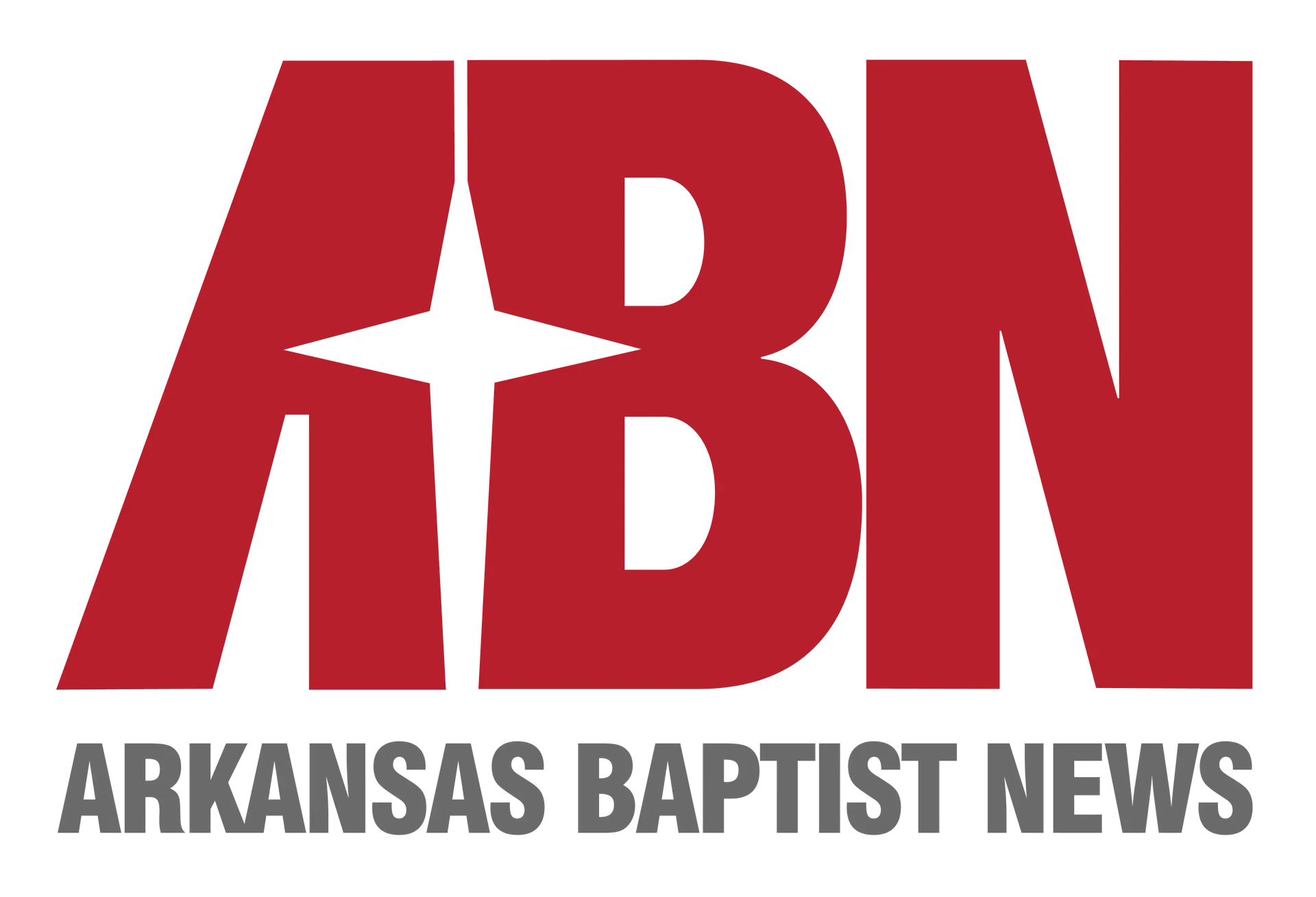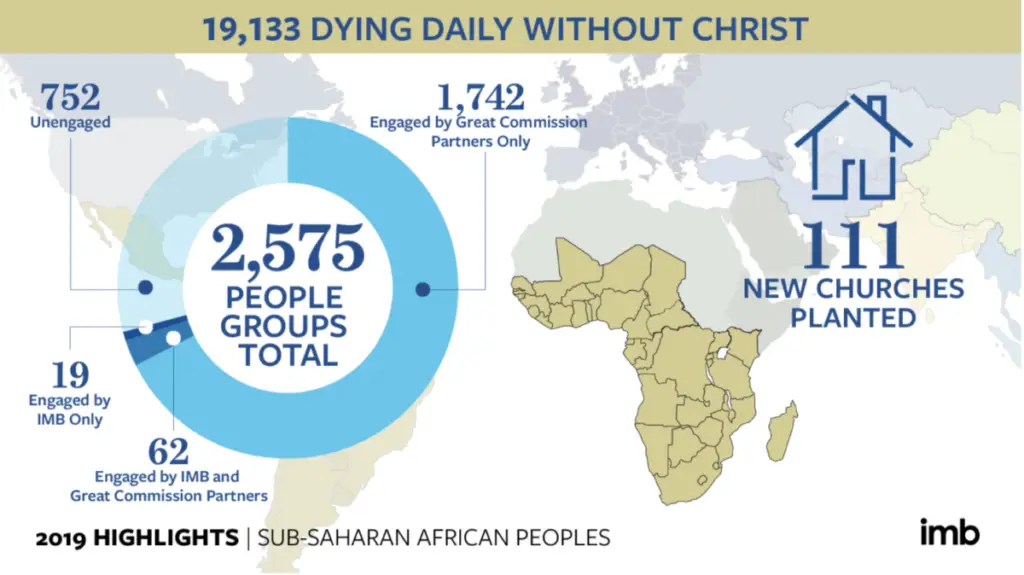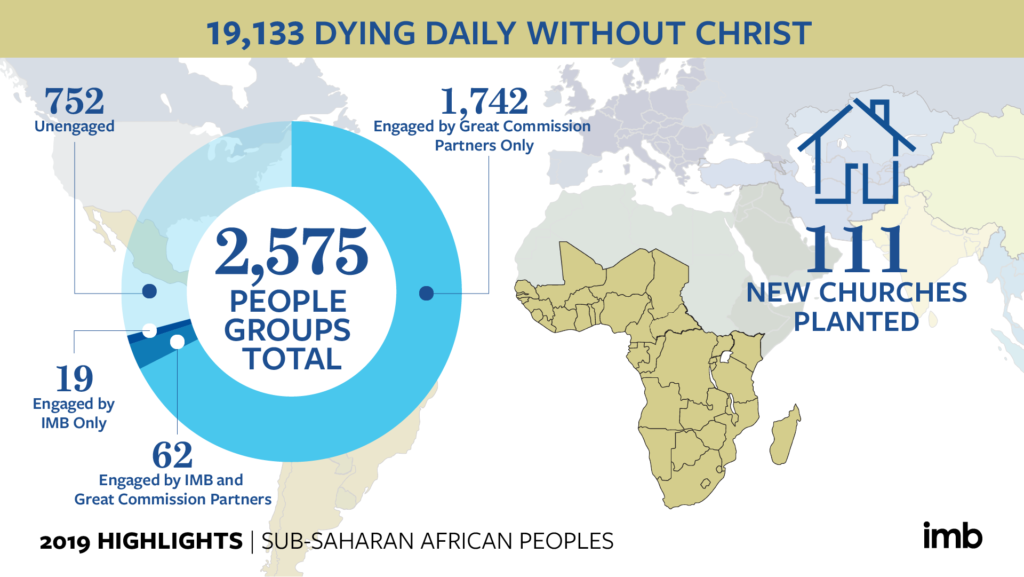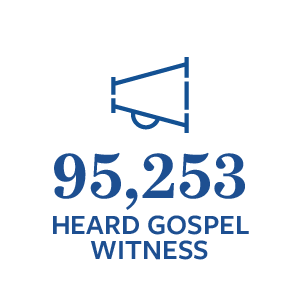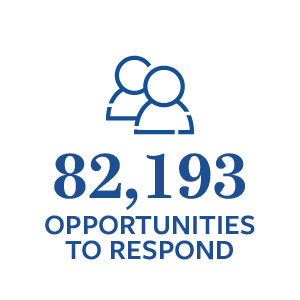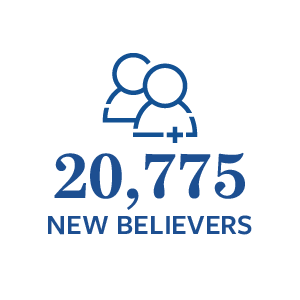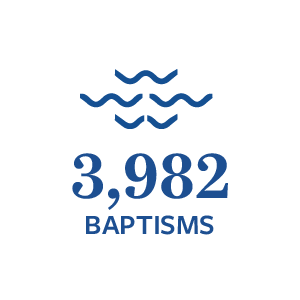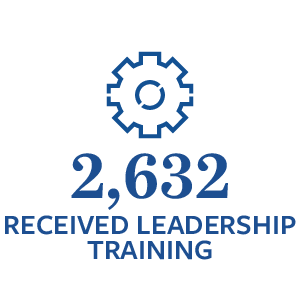Editor’s note: This is the twelfth post in a 12-part series that highlights information found in IMB’s Annual Statistical Report. The report is based on 2019 research data. A full copy of the report is available at imb.org/asr.
STORIES FROM THE FIELD – SUB-SAHARAN AFRICAN PEOPLES
Healthy Church Formation
VBS ministry and neighborhood evangelism were used to plant two new churches in Sub-Saharan Africa. Partnerships between national leaders and U.S. pastors resulted in the formation of three other new churches. In addition, God worked in the hearts of an elderly couple to plant another church —complete with mud block walls and a grass roof—in a nearby village.
Leadership Development
Responding to requests of local church leaders, four churches partnered to train leaders and church members. IMB and Brazilian Baptists are training and equipping African pastors to be effective leaders with sound theology.
Exit to Partnership
In 2009, IMB workers began training six men in the missionary task in a Sub-Saharan country. Over the years, the men took ownership and have led out in the task of reaching their people with the gospel. IMB personnel now continue in relationship with the leaders but no longer lead out in the ministry. Through the six men’s obedience to the Great Commission, they have formed two separate teams to evangelize in multiple locations.
Eleven indigenous people groups reported self-sustaining ownership in the missionary task in 2019. Sixteen people groups are engaging other people groups in their country, and two people groups are engaging people groups outside of their country.
Your giving enables IMB workers in Sub-Saharan Africa to minister to communities using VBS, train Sub-Saharan leaders in theology and partner with Sub-Saharan churches who are sending out Christian workers of their own. Give now to support the work in Sub-Saharan Africa.
All data, except for active field personnel and unreached people group counts, reflects information from the 2019 Data-Year Annual Statistical Report (IMB).
This article was originally published by the IMB at imb.org
